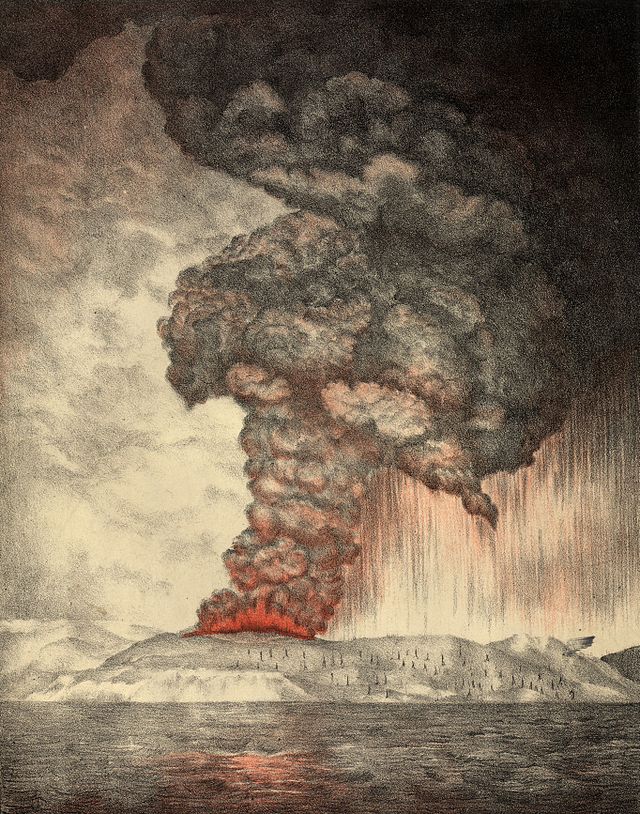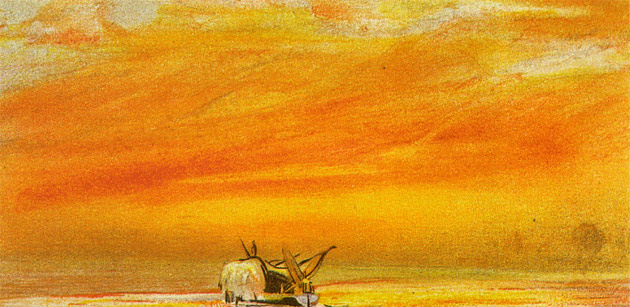On August 26, 1883, the volcanic island of Krakatoa began to erupt. It spewed enough dust and gas to affect weather worldwide for the next several years. Over 35,000 people died as a result. By the following day, two thirds of it was submerged.
Volcanic steam started venting as early as May 20, 1883. When the eruption occurred, ash was hurled 17 miles into the sky. Pressure gauges at the Batavia (now Jakarta) gasworks went off the scale. Sailors’ eardrums burst. Tsunamis hit Java, Sumatra and even South Africa. Hot ash from the sky killed 1,000 in what is now Ketimbang, Sumatra. All 3,000 inhabitants of the island of Sebesi perished. The Dutch authorities listed the death toll at 36,417.
Sulfur gas from the eruption increased cloud reflectivity, which cooled the world. Average summer temperatures in the Northern hemisphere dropped by two degrees for the next five years. The sulfur returned to the sea and land as acid rain.
The sky changed. It became darker in the years to come. William Ashcroft painted the new red sunsets of Great Britain. These may have been captured in Edvard Munch’s “The Scream.” Twilight was purple and moonlight was blue or green. An “equatorial smoke stream” was observed, which later was identified as the Gulf Stream.
The 1969 film Krakatoa, East of Java framed the event as a nautical adventure. It popularized the name Krakatoa instead of the Indonesian Kratkatau. It also got its directions wrong. Kratkatau is west of Java.



There are no voices yet... Post-script us a message below, won't you?